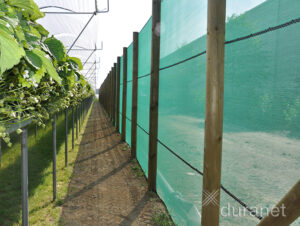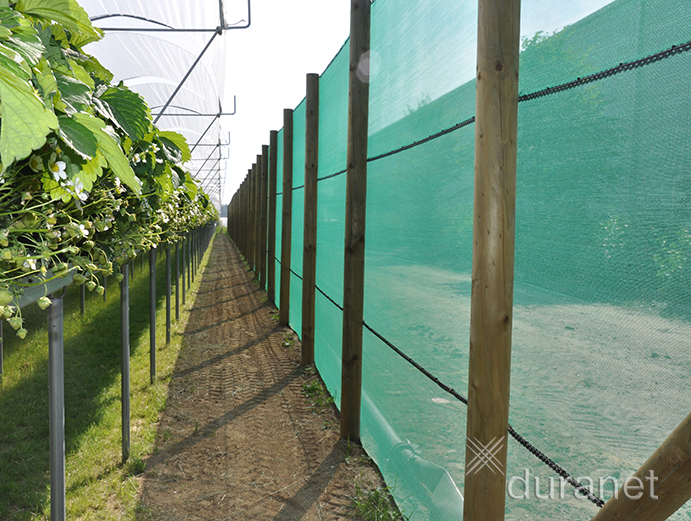Horticulturalist Peter Whyte gives some advice on protecting Greenhouses.
Sheltering a greenhouse from strong winds reduces damage, but if not done properly it can do more harm than good. A solid barrier such as a wall stops the wind dead in its tracks, but the air pressure that builds up in front of that wall turns the wind up and over the top and around the ends or corners. The diverted wind adds to the wind already passing by, increasing the wind speed there. And because the wind pressure increases as the square of the wind speed, it greatly increases its force and the damage it causes. To make matters worse the airstream passing over or around a solid barrier creates a vacuum behind it that causes violent turbulence, which further increases damage.
The trick is to create a permeable barrier, with holes to let some of the high-pressure air from in front pass through it and fill the vacuum behind. This eliminates the turbulence and continues straight on but at a lower speed, pushing up the high-speed airstream coming over the top of the barrier. The average wind speed is reduced by half for a distance of ten times the barrier’s height downwind, but also for twice its height upwind because some of the airstream is diverted upwards before it reaches the barrier (so you can place a barrier close behind a greenhouse to avoid blocking the sun).
The ideal windbreak is about 50-60% solid and 40-50% holes. A hedge like that would be transparent enough to let you see cattle through it but dense enough to prevent you counting them. Artificial barriers can be made with walls of concrete screen blocks or solid concrete blocks spaced apart, or purpose-made plastic screening such as ParafenceTM fixed to posts.






